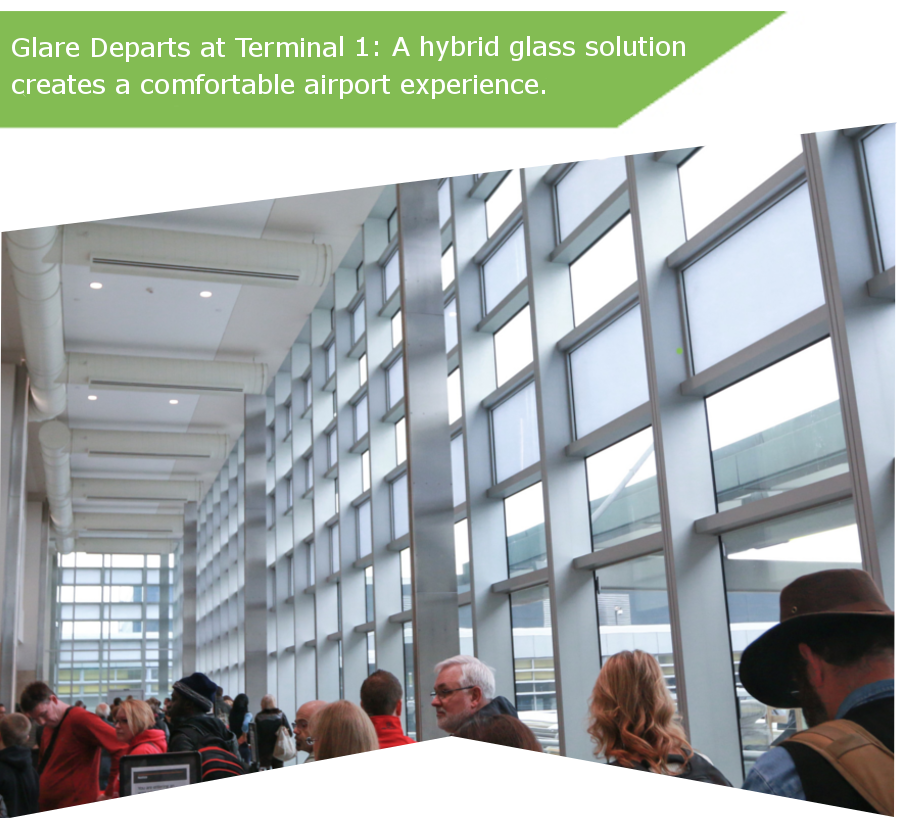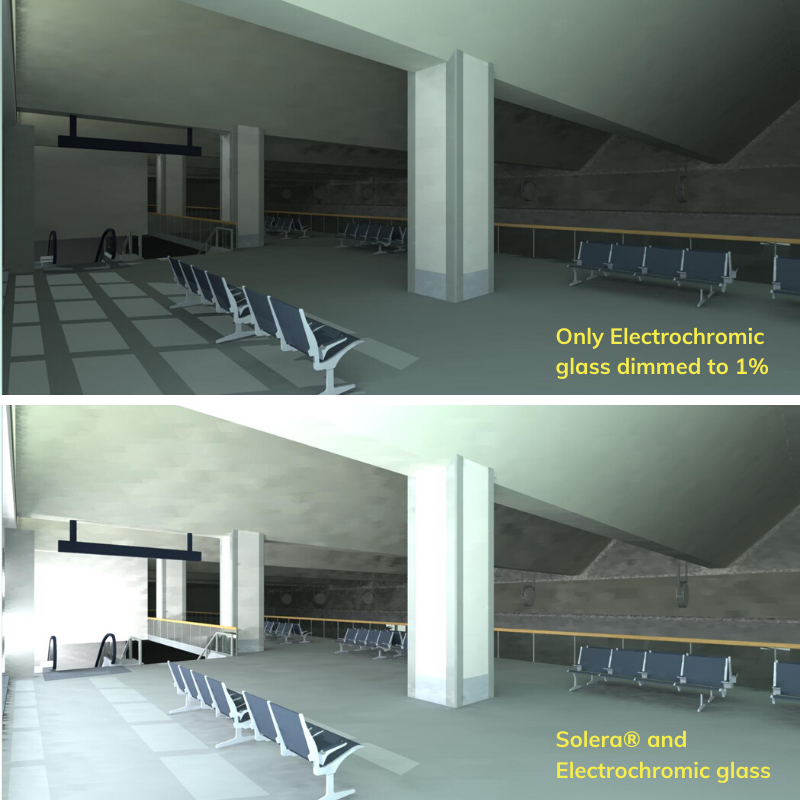
Glare Departs at Terminal 1: A hybrid glass solution creates a comfortable airport experience.
Whether heading on vacation to a sunny paradise, travelling across the country for business or heading out of state to visit family, the airport departures hall is where it all begins.
When expanding Terminal 1-Lindbergh at Minneapolis-St. Paul International Airport (MSP), the architecture and planning firm Alliiance re-imagined the airport experience – for both employees and travellers. Natural light and a visual connection to the outdoors were an important part of the vision, however, they understood how challenging this can be. Alliiance knew this design had to control glare and heat gain to achieve comfort inside the often-congested space that serves 37 million passengers annually. Failure to do so would mean inflicting visual and thermal discomfort on building occupants, and this was not an option.
“The terminal is 940 feet long and faces southeast, so it gets a lot of direct sunlight, including deep penetration at sunrise. We had a vision to create a unified façade that adapts to solar conditions – whether it be the harsh morning sun or dimming light at dusk,” says Director of Sustainable Design at Alliiance, Greg Maxam. “We came up with a hybrid solution, integrating both Solera® translucent glazing and electrochromic glass, glass that can be electronically tuned from clear to heavily tinted. The electrochromic glass allows views while controlling glare and solar heat gain. The Solera® provides ample daylight even when the vision glass is tinted at its darkest, and at the same time adds a dynamic visual element to the façade, both inside and out.”
A solar penetration study determined where to use each of the different types of glass during the design phase. For Alliiance, sustainability is a guiding factor in every project. By combining Solera® and electrochromic glass, Minneapolis St. Paul International Airport will lower their energy usage – saving costs and benefiting the environment. Also, the combination of glass eliminates the need for blinds and other window coverings.
“We chose Solera® for the upper section of the façade because we like how it scatters light, while improving the U-value of the overall facade,” says Alliiance Lead Designer, Ashley Ilvonen. “Solera® offered custom sizing, the translucent panels control glare, and the white colouring helps achieve an airiness in the building. This is especially important at night, when you miss the positive effects of daylighting.”
Ashley Ilvonen continues, “Airports are public buildings with long life spans…higher quality products are needed, higher durability and product performance. All of this leads you to Solera®—a more integrated daylighting solution for more design freedom.”
The initial expansion was completed in 2012 and the remaining sections are scheduled to be completed in 2021. The airport will have remained 100% operational throughout the entire construction.

Photo credit: Metropolitan Airports Commission